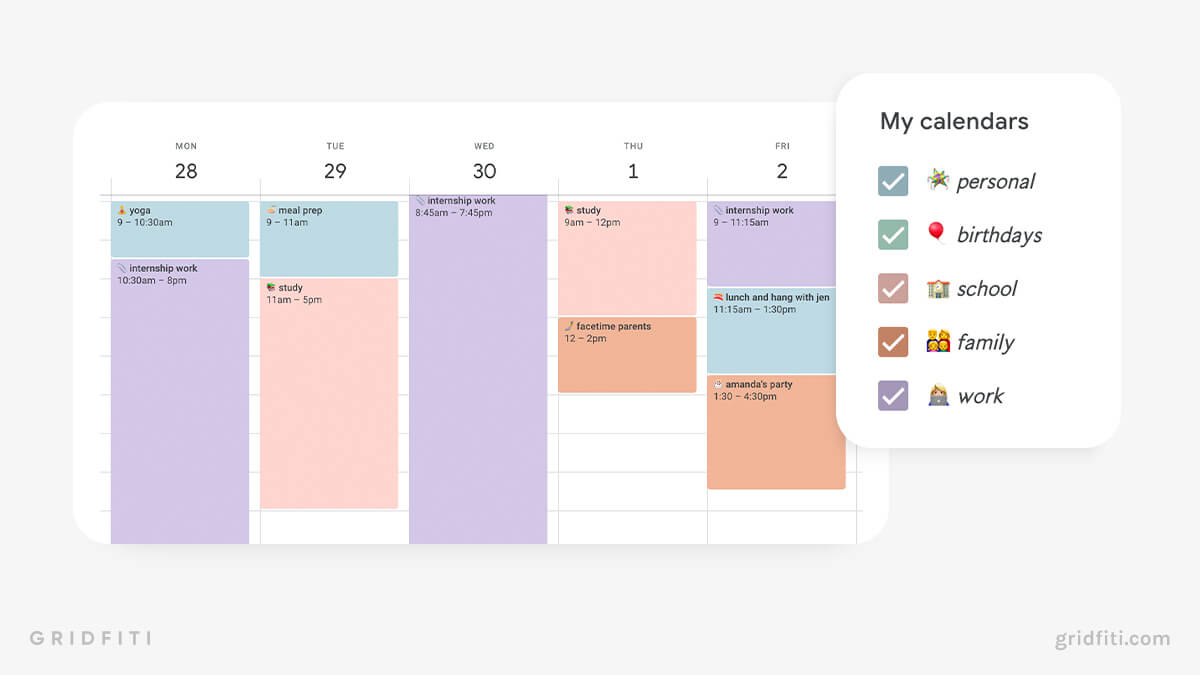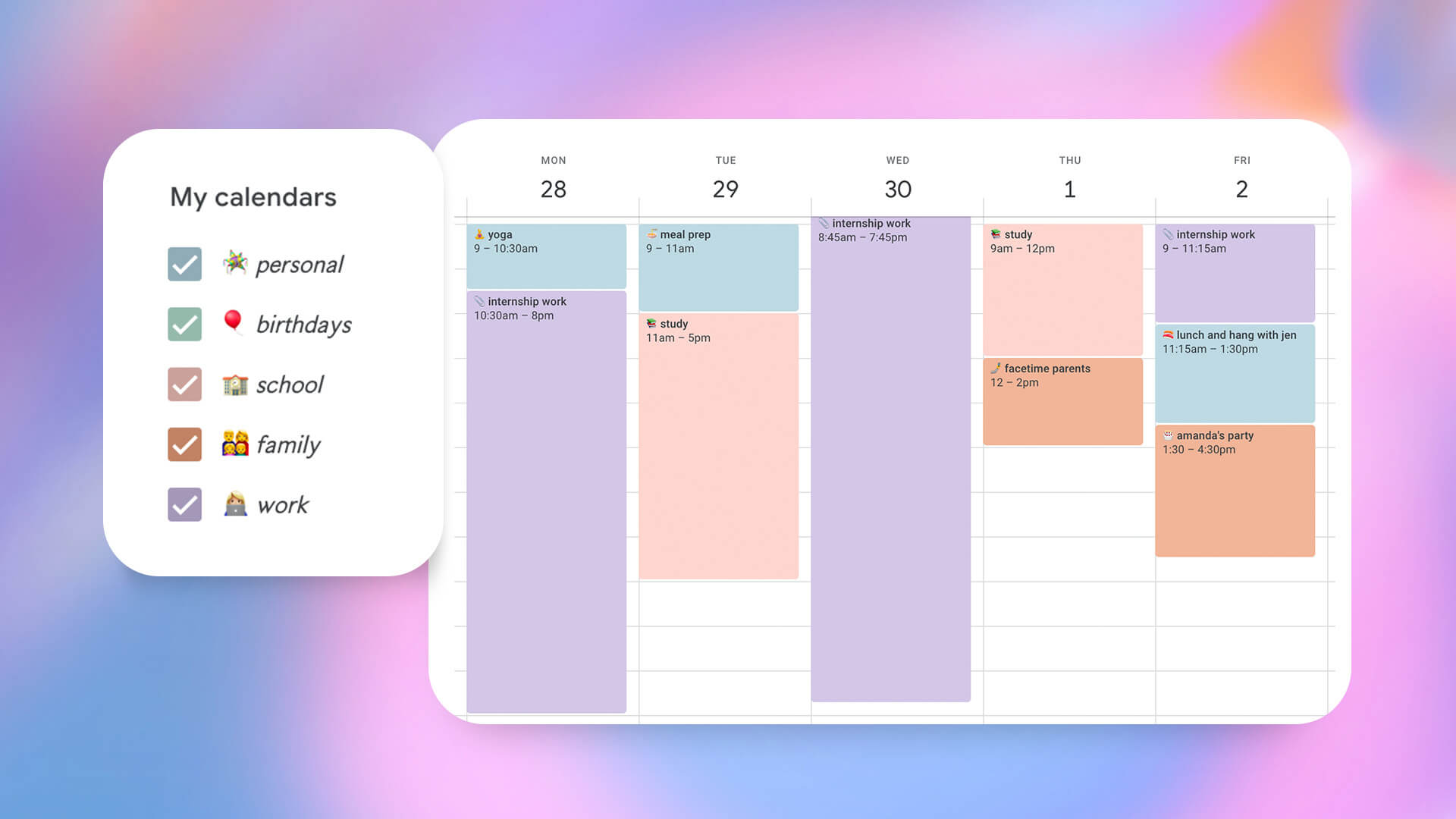A Pastel Paradise: Mastering Hex Codes For A Calmer Google Calendar
A Pastel Paradise: Mastering Hex Codes for a Calmer Google Calendar
Associated Articles: A Pastel Paradise: Mastering Hex Codes for a Calmer Google Calendar
Introduction
With nice pleasure, we’ll discover the intriguing subject associated to A Pastel Paradise: Mastering Hex Codes for a Calmer Google Calendar. Let’s weave fascinating data and provide contemporary views to the readers.
Desk of Content material
A Pastel Paradise: Mastering Hex Codes for a Calmer Google Calendar

Google Calendar, a ubiquitous device for managing our more and more advanced lives, usually defaults to a visually jarring array of vibrant, saturated colours. Whereas practical, this vibrant palette can really feel overwhelming, particularly when juggling a number of calendars and occasions. The answer? Embrace the soothing serenity of pastel hex codes to remodel your digital scheduling expertise. This text dives deep into the world of pastel hex codes, exploring their creation, utility inside Google Calendar, and the way they will contribute to a extra peaceable and productive workflow.
Understanding Hex Codes and the Pastel Palette
Earlier than we delve into the specifics of Google Calendar, let’s set up a foundational understanding of hex codes. Hexadecimal shade codes are six-digit alphanumeric strings (e.g., #FF0000) used to symbolize colours in digital environments. Every pair of characters corresponds to a particular shade channel: crimson (RR), inexperienced (GG), and blue (BB). By manipulating these values (00 being the absence of a shade and FF representing its most depth), we are able to generate hundreds of thousands of distinctive colours.
Pastel colours are characterised by their low saturation and excessive lightness. They’re muted, delicate variations of their brighter counterparts, evoking emotions of calmness, gentleness, and class. Within the context of hex codes, this interprets to larger values for the lightness element, achieved by growing the numerical worth throughout all three shade channels (R, G, and B) whereas holding the variations between them comparatively small. The result’s a softer, extra subdued hue.
Creating Your Personal Pastel Hex Codes
Whereas quite a few web sites provide pre-generated pastel palettes, creating your personal permits for full customization and management. A number of strategies can facilitate this course of:
-
On-line Coloration Pickers: Many web sites provide intuitive shade picker instruments. These instruments usually can help you modify the hue, saturation, and lightness (HSL) values, making it easy to create pastel shades. Merely cut back the saturation and improve the lightness to attain the specified pastel impact. The device will then present the corresponding hex code.
-
Hex Code Calculators: These on-line calculators permit for direct manipulation of the hex code itself. By incrementing the values of the hex code, you’ll be able to subtly alter the colour to attain a pastel variant. For instance, beginning with a vibrant crimson (#FF0000), you could possibly progressively improve the inexperienced and blue values to create a spread of pastel pinks and peaches.
-
Coloration Concept Data: A deeper understanding of shade idea can considerably support in creating harmonious pastel palettes. Studying about complementary, analogous, and triadic shade schemes can information you in deciding on colours that work nicely collectively. This ensures a visually interesting and cohesive calendar expertise.
Making use of Pastel Hex Codes to Google Calendar
Google Calendar would not immediately assist hex code enter for calendar colours. As a substitute, it depends on a pre-defined palette of colours. Nevertheless, there are methods to attain a pastel aesthetic:
-
Closest Match Method: Browse Google Calendar’s shade choices and choose the shades that the majority intently resemble your required pastel hex codes. Whereas not completely correct, this technique supplies a fast and simple answer for incorporating pastel tones.
-
Customized Calendar Apps: A number of third-party calendar apps provide extra granular management over shade customization, probably permitting for direct hex code enter or a wider number of pastel shades. Researching and selecting an app that matches your wants can unlock the next degree of customization.
-
Visible Aids and Coloration Conversion: Use a web-based device to transform your hex codes to RGB values. Then, attempt to discover the closest match in Google Calendar’s shade choice by evaluating RGB values. This requires some handbook effort, however it might yield higher outcomes than the straightforward visible matching method.
Constructing a Harmonious Pastel Calendar System
Making a visually pleasing and practical Google Calendar with pastels requires considerate planning and consideration:
-
Coloration Psychology: Totally different pastel shades evoke totally different moods and associations. Take into account the psychological affect of your chosen colours. As an example, mild blues and greens are sometimes related to calmness and productiveness, whereas softer pinks and peaches can convey heat and gentleness.
-
Distinction and Readability: Whereas pastels are inherently smooth, guarantee ample distinction between the textual content and the background shade to keep up readability. Utilizing darker textual content (e.g., a darkish grey or charcoal) in opposition to lighter pastel backgrounds typically works nicely.
-
Categorization and Consistency: Assign totally different pastel shades to totally different calendars or classes of occasions. Preserve consistency in your shade scheme to enhance visible group and ease of navigation. For instance, use a constant shade of blue for work-related occasions and a constant shade of inexperienced for private appointments.
-
Accessibility Issues: Guarantee your shade selections meet accessibility tips. Enough distinction ratios are essential for customers with visible impairments. Instruments can be found on-line to verify the distinction ratio between your chosen textual content and background colours.
Examples of Efficient Pastel Hex Codes for Google Calendar
Whereas the exact hex codes is probably not immediately relevant to Google Calendar with out using third-party instruments, these examples illustrate the idea and the ensuing aesthetic:
-
#F2D7D5 (Delicate Pink): Excellent for private appointments or reminders.
-
#B2EBF2 (Mild Blue): Appropriate for work-related occasions or conferences.
-
#D5E8D4 (Pale Inexperienced): Excellent for health actions or nature-related occasions.
-
#F5E9B9 (Creamy Yellow): Can be utilized for reminders or much less pressing occasions.
-
#D9E4E6 (Mild Grey): A impartial choice for much less necessary occasions or normal reminders.
Past the Aesthetics: The Productiveness Enhance
The shift to a pastel-themed Google Calendar is not nearly aesthetics; it might considerably affect productiveness. A calmer, much less visually stimulating interface reduces eye pressure and cognitive overload, permitting for higher focus and focus. The improved group facilitated by a constant shade scheme enhances effectivity in managing and prioritizing occasions.
Conclusion: A Serene Scheduling Expertise
By understanding the nuances of hex codes and the calming properties of pastel colours, you’ll be able to rework your Google Calendar from a visually overwhelming device right into a serene and productive scheduling companion. Whereas direct hex code enter is likely to be restricted inside the usual Google Calendar utility, exploring different strategies, reminiscent of third-party apps or cautious shade choice, means that you can create a customized pastel paradise that enhances each your visible consolation and your general effectivity. Embrace the facility of pastel hex codes and expertise the distinction a relaxing shade palette could make in your day by day workflow.








Closure
Thus, we hope this text has supplied priceless insights into A Pastel Paradise: Mastering Hex Codes for a Calmer Google Calendar. We hope you discover this text informative and helpful. See you in our subsequent article!